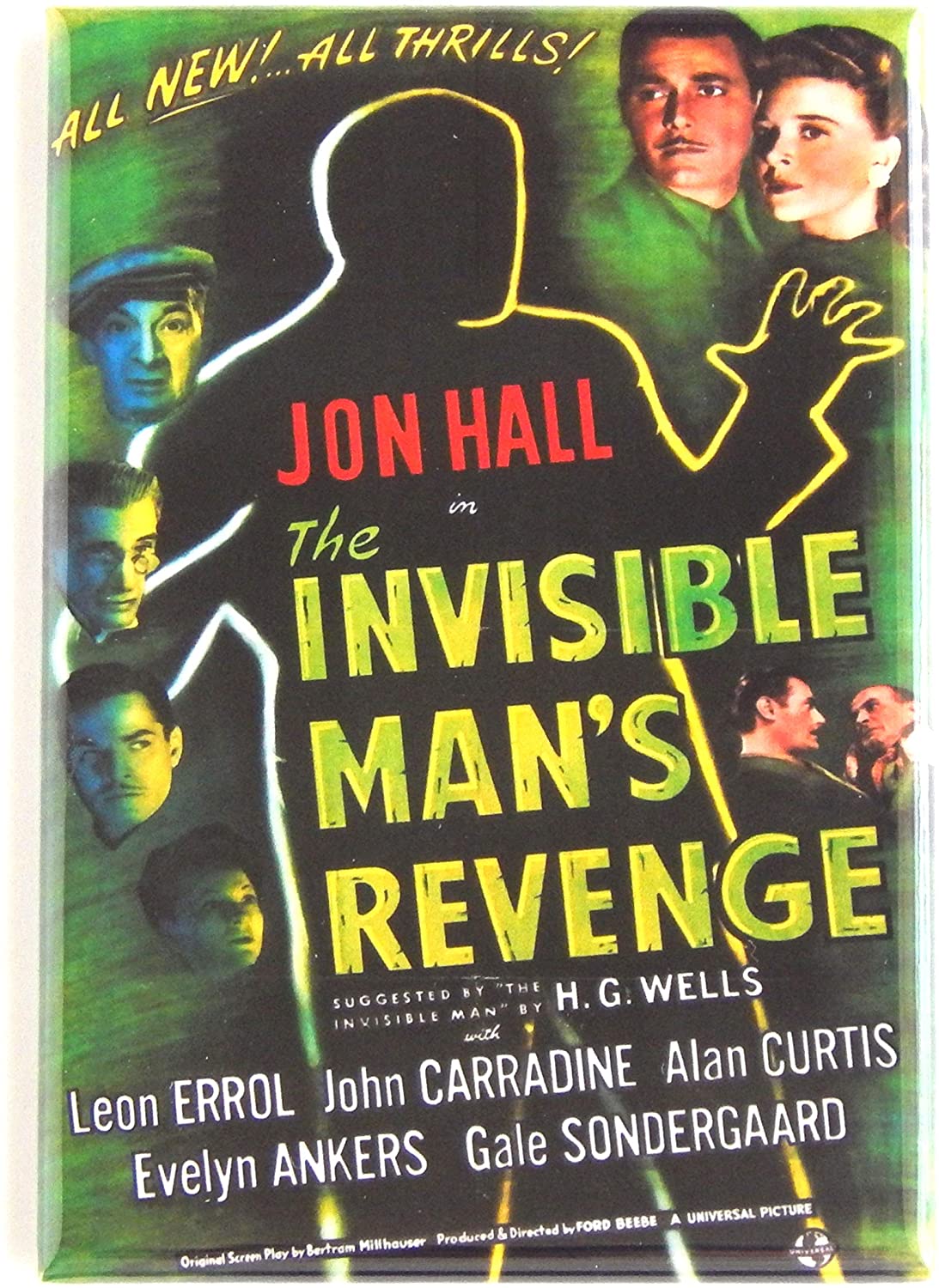 Welcome to our column Creepy Crypts, in which our writers exhume the old, the forgotten, and the long dead horror some of us have forgotten...until now... ...The Invisible Man’s Revenge (1944) is the story of Robert Griffin (Jon Hall), a mental patient who escapes from an institution and plots revenge against the wealthy Herrick family. According to Griffin, he helped the Herrick family to discover a diamond field in Africa, only to be swindled out of his share. The Herricks have Griffin thrown out of their mansion, but he returns with a new weapon: a scientific method of becoming invisible. By the time this film was produced, Universal’s Invisible Man series had been firing in various different directions. The Invisible Woman had ditched all menace for screwball comedy, while Invisible Agent turned the unseen character from villain to wartime superhero. Now, with The Invisible Man’s Revenge, director Ford Beebe and screenwriter Bertram Millhauser took what could be termed a back-to-basics approach. This film re-uses the basic plot of the first sequel The Invisible Man Returns—a wronged man turns invisible to strike back at his enemies, but becomes a megalomaniac in the process—and throws in a dash of the overt horror that characterised the original Invisible Man. The results, it has to be said, are questionable. Anyone who’s watched the series up until this point will recognise most of the elements that go up to make The Invisible Man’s Revenge, from the prankish comic-relief sequence (in this case, Griffin helps his accomplice to cheat at pub darts) through to the now-familiar business of the Invisible Man going mad with power. The film does manage to push Universal’s effects department a little further: unlike past invisible men, Robert Griffin is fond of throwing water or flour over his face to achieve a ghostly, semi-transparent look, while one scene has him dashing out of a room as he turns invisible before our eyes. Like all of Universal’s sequels in the series—but contrary to both the original film and H. G. Wells’ source novel—the film depicts the Invisible Man and the scientist who invented a means of invisibility as two separate characters. The latter is played by John Carradine, who cemented himself as Universal horror royalty over the course of 1944: not only did he appear in this film, but he also turned up as a villain in The Mummy’s Ghost and, most famously, became the studio’s official Count Dracula in House of Frankenstein. The material given to Carradine again owes a lot to The Invisible Man Returns—that film’s invisible guinea pigs are reincarnated here as an invisible dog and parrot—but the actor delivers his own spin, helping to restore a touch of the original film’s camp Gothic. Another element borrowed from The Invisible Man Returns is the notion that invisibility can be cured via a blood transfusion. While the earlier film used this concept as the basis of a happy ending, this time around it becomes a vehicle for horror: the latest Invisible Man takes on a vampiric attribute, draining innocents of their blood so as to temporarily regain visibility, until he fades and must kill again. On paper, this all sounds like the makings of a solid follow-up to the 1933 classic. So where does The Invisible Man’s Revenge lose its way? The main issue is that the film gets bogged down in the main character’s backstory. The first act is burdened with establishing Robert Griffin’s overcomplicated history, which involves discovering a diamond field on safari and then losing his memory after a blow to the head. Yet all of this is allowed to fade from the film without any sort of satisfying conclusion; the audience is expected to be too caught up in the invisible hijinks to care about the film abandoning the character-based drama it spent so much time building up. Compared to the original film in the series, which began with the unforgettable opening sequence of the Invisible Man walking into an inn and proceeded to build its entire narrative around this image, The Invisible Man’s Revenge looks like a mess. What makes this particularly regrettable is that, as well as being the first real misfire in the series, The Invisible Man’s Revenge was the last entry until the title character became fodder for Abbott and Costello. The lineage of Invisible Men deserved a better send-off. By Doris V. Sutherland Support the AAPI Community Fund with us by donating here.
0 Comments
Leave a Reply. |
Archives
March 2023
|


 RSS Feed
RSS Feed